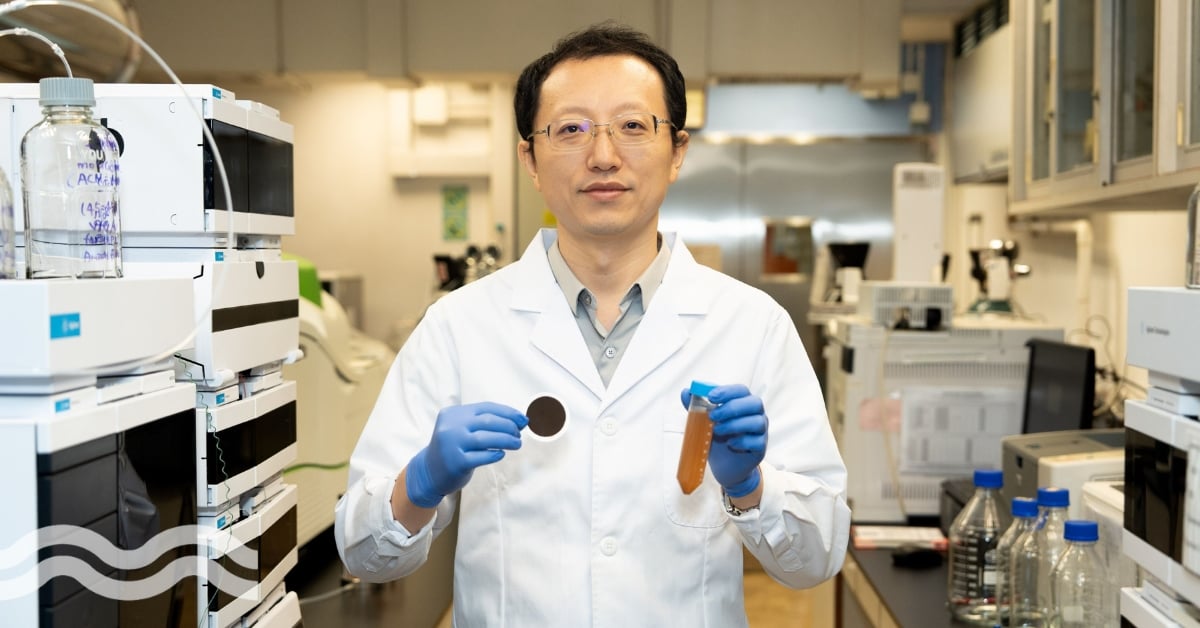Ceramic membranes: is the tide set to change?

The case is starting to look compelling for ceramic membranes to be the next major trend, according to Dr Graeme Pearce, principal of Membrane Consultancy Associates.
Two major membrane trends
Just when we all thought that the dust had settled, everything is set for change in the membrane market.
In the 20 years since polymeric membranes made their dramatic entrance to the municipal market, there has been a gradual consolidation as products have matured and improved and application knowledge has advanced.
Some early entrants have dropped out and the stronger offerings now dominate. A few years ago, it seemed we were heading for calmer waters as we came out of the financial crisis.
However, two major trends have stirred up the pot again. Firstly, in polymerics we now have two companies with a portfolio of products that dominate the market, namely DuPont and Suez.
It used to be that each supplier was an advocate for its own product type and the market was split between a dozen or so suppliers, each promoting different materials and formats with little commonality and a very limited degree of interchangeability.
However, first Suez and now DuPont have changed all that by acquiring technologies and companies that used to inhabit enemy territory.
Both now advocate a solution from anywhere across the spectrum of offerings including reverse osmosis/nanofiltration (RO/NF), ultrafiltration/microfiltration (UF/MF) as well as MBR and this has fundamentally changed the dynamics of the market.
Switching to ceramics
The only piece missing from either portfolio is ceramics. Yet, the case is starting to look compelling for ceramic membranes to be the next major trend.
Ceramic suppliers were never in doubt, naturally, but I was particularly taken by the strength of the case studies presented by end users in a recent webinar I attended.
“They left no doubt that the switch to ceramics had saved hassle, reduced operating cost, increased throughput, and improved water quality.”
Firstly, there were two Nanostone projects from the US, each presented in videos by the plant managers. They left no doubt that the switch to ceramics had saved hassle, reduced operating cost, increased throughput, and improved water quality.
This was followed by the technology arm of PWN, who were so impressed by ceramics that they formed their own company, PWNT.
Ceramics are successfully used at PWN’s works at Andijk, and a second project was also discussed in a panel session by South West Water in the UK. Last but not least is PUB’s own interest in ceramics at the CCK facility in Singapore (pictured below) and in current desalination pilots.

Ceramic membrane upgrade at 160 mld CCK Waterworks, Singapore (photo courtesy of PUB).
Overcoming challenges to implementation
Ceramics have both positive and negatives in regard to the issue of hydrodynamics.
Firstly, on the plus side, the membrane itself enjoys an excellent hydrodynamic environment. The lumen of all of the ceramics used in water treatment is relatively large which avoids pressure drop limitations of polymerics and allows an aggressive backwash. The wide lumen therefore ensures stable performance even if operating at high flux.
However, at the module/system level, high flux creates its own problems. In multi-element vessels the relatively high flow from each element creates a very high flow for the whole vessel. Indeed, it is so high that it becomes difficult to control and ensure an even flow distribution.
As a result, pressure surges can occur and local fouling rates can become excessive. It is known that some of the early large-scale ceramic plants using multi-element vessels have suffered from teething problems due to this issue.
“Ceramics are therefore temporarily a victim of their own success….”
Ceramics are therefore temporarily a victim of their own success and attention has been focused on addressing the issues created by the management of high flows in a compact plant. Hopefully this issue of engineering detail has been resolved as we are already seeing the implementation of the next generation of these large-scale ceramic plants.
Online learning
Teething issues to one side, listening to all of this positive feedback, it is clear that end users of ceramics are not just dabbling at the margins, but are the early adopters of the next big thing in membranes.
The company and technology developments have reinforced my decision to bring my training workshop series on-line. I have been conducting physical workshops for the last 15 years, but the lockdown this year has forced me to re-evaluate this approach.
I like the physical workshops, and the interaction and intensity of the teaching and learning process is invaluable, but it now seems to be time to add another string to the bow. Virtual workshops have the obvious advantage of not having to travel for either teacher or student and can be packaged in bite size morsels.
As a result, I have joined forces in this endeavour with TechnoBiz, and we are offering three webinar series on polymerics, ceramics and MBR. It would be great to continue the discussion with many of you on this topic!
– More information on the webinar series taking place from 18th January to 9th February, 2021, can be found at www.knowhow-webinars.com and information on Membrane Consultancy Associates can be found here.

Dr Graeme Pearce
Principal
Membrane Consultancy Associates


